Goreme Valley: A Fairytale Landscape in Cappadocia
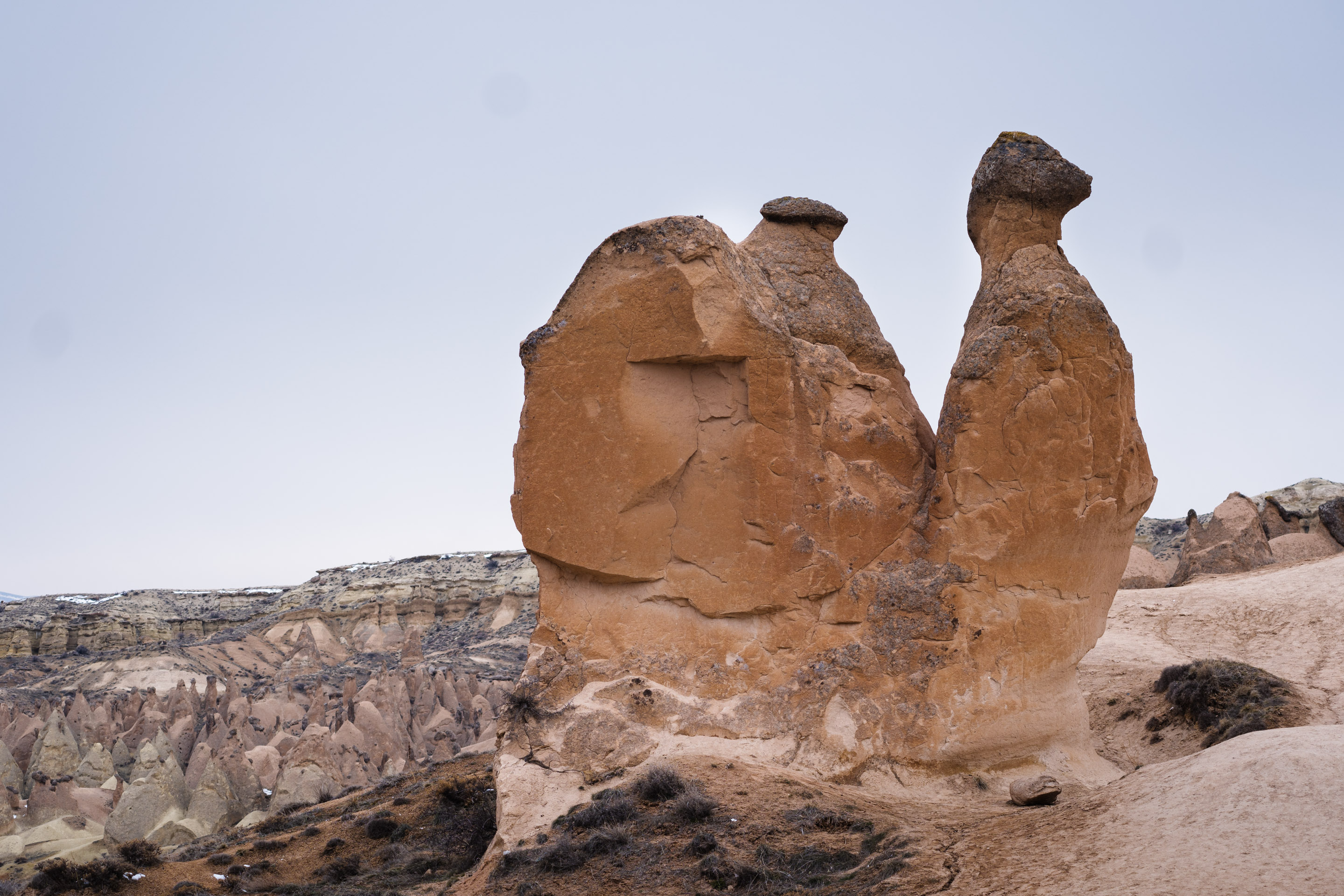
I. Introduction to Goreme Valley
Location and significance of Goreme Valley
Goreme Valley, located in the Cappadocia region of Turkey, is a UNESCO World Heritage Site known for its unique and surreal landscape. The valley is home to ancient cave dwellings and rock formations shaped by volcanic activity over millions of years.
One of the main highlights of Goreme Valley is its distinctive fairy chimney rock formations. These towering spires, formed by volcanic ash and erosion, create a surreal and otherworldly landscape that attracts visitors worldwide. The valley is also famous for its extensive network of underground cities and cave churches, where early Christians sought refuge during persecution.
Historical background of the region
The history of Goreme Valley dates back thousands of years. The region has been inhabited since prehistoric times, and evidence of human settlement can be traced back to the Hittites in the 2nd millennium BCE. However, it was during the Roman and Byzantine periods when the area experienced its golden age.
During this time, communities began carving houses, churches, and monasteries into the soft volcanic rock. These underground dwellings provided a haven for early Christians escaping persecution. The churches, adorned with stunning frescoes, served as places of worship and reflection for the growing Christian community in the region.
Goreme Valley has gained popularity as a tourist destination in recent years due to its unique landscape and historical significance. Visitors can explore the ancient cave dwellings, visit the rock-cut churches with their intricate frescoes, and marvel at the breathtaking panoramic views from the hilltops.
To learn more about the fascinating history and geological wonders of Goreme Valley, you can visit this Wikipedia page.

II. Geological Wonders of Goreme Valley
Formation of fairy chimneys and rock formations
Goreme Valley, located in the heart of Cappadocia, is known for its unique geological formations that have captivated visitors for centuries. One of the most fascinating features of the valley is the formation of fairy chimneys. These towering rock formations, also known as hoodoos, result from volcanic activity millions of years ago.
During the eruption of Mount Erciyes and Mount Hasan, lava and ash covered the region, creating a layer of tuff rock. Over time, the tuff rock was eroded by wind and water, leaving behind the distinctive fairy chimneys seen today. These formations vary in size and shape, reaching heights up to 130 feet. The fairy chimneys are often topped with a harder rock cap that protects the softer, tuff rock underneath, creating a unique and enchanting sight.
Unique landscape and erosion processes
The landscape of Goreme Valley is unlike any other in the world. The erosion processes that have shaped the valley have resulted in a surreal and otherworldly environment. The tuff rock formations have been carved by wind and water into intricate shapes and patterns, creating scenery that resembles something out of a fairytale.
One of the most fascinating aspects of the erosion processes in Goreme Valley is the formation of caves. Over the centuries, the soft tuff rock has been easily excavated by humans, creating a network of underground dwellings and places of worship. The cave dwellings provided shelter for the region's early inhabitants and later became an important part of the monastic Christian communities that thrived in Cappadocia.
The surreal landscape of Goreme Valley has been recognized as a UNESCO World Heritage site, attracting tourists from around the world who come to marvel at its natural beauty and unique geological features. Whether exploring the fairy chimneys, hiking through the valleys, or venturing into the underground cities, visitors to Goreme Valley are sure to be awe-struck by the magical landscape surrounding them.
To learn more about the geological wonders of Goreme Valley, you can visit the Goreme National Park and the Rock Sites of Cappadocia Wikipedia page.
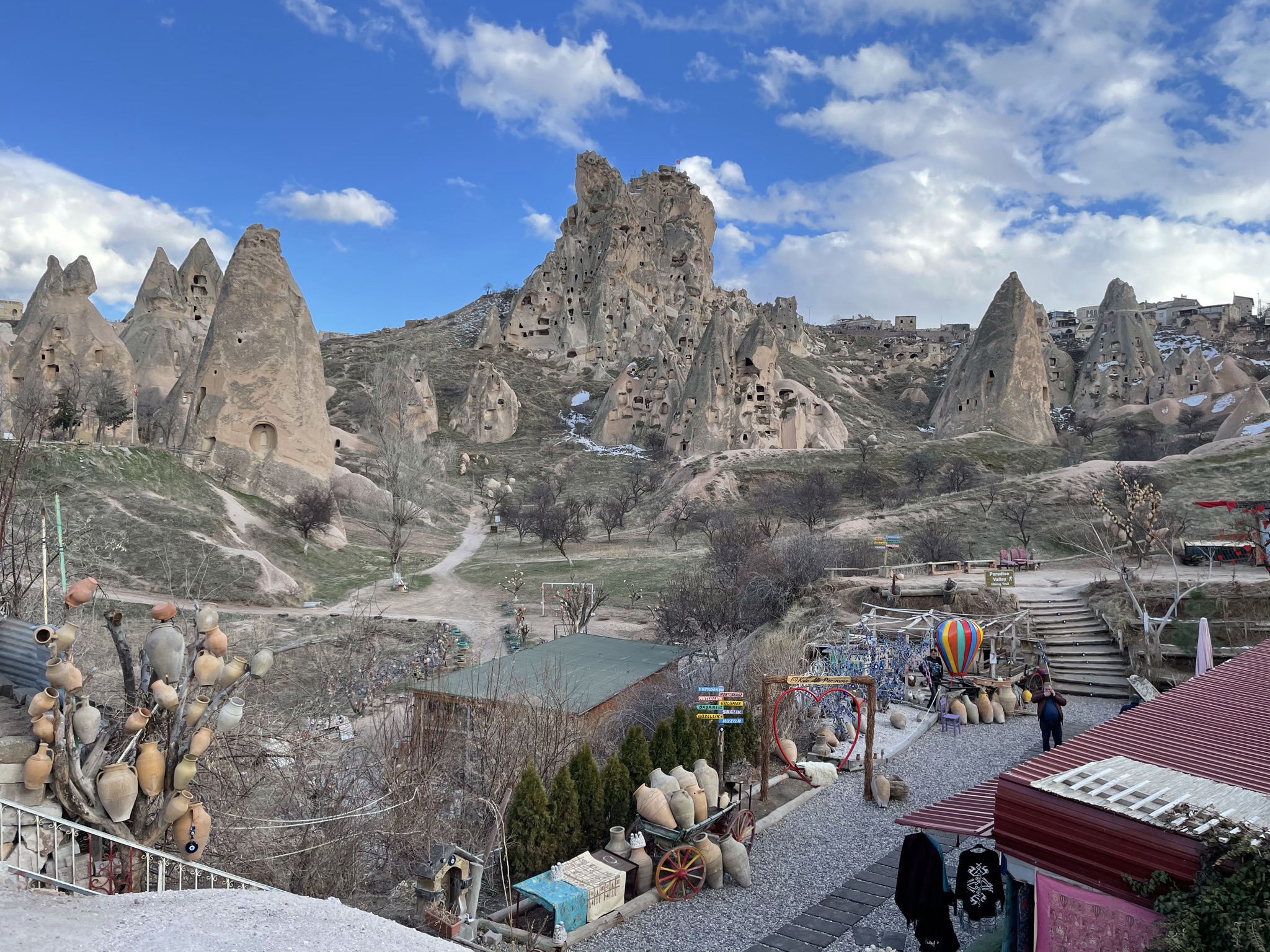
III. Cultural Heritage of Goreme Valley
Ancient cave dwellings and rock-cut churches
Goreme Valley in Cappadocia, Turkey, is not only known for its stunning natural beauty but also for its rich cultural heritage. The valley is home to ancient cave dwellings and rock-cut churches that date back to the 4th century. Early Christians carved These unique dwellings into the soft volcanic rock seeking refuge from religious persecution. The caves were used as homes and places of worship, with intricate frescoes adorning the walls of the rock-cut churches. Visitors can explore these fascinating caves and churches, marvelling at the craftsmanship and historical significance.
UNESCO World Heritage Site status
The international community has recognized the cultural significance of Goreme Valley, and it was designated as a UNESCO World Heritage Site in 1985. This prestigious status is given to sites with outstanding universal value and deserves protection for future generations. Goreme Valley's unique rock formations, cave dwellings, and rock-cut churches make it a remarkable place to visit.
As a UNESCO World Heritage Site, Goreme Valley attracts visitors worldwide who come to admire its historical and cultural importance. It serves as a reminder of the ingenuity and resilience of the early Christians who carved out their lives in the rock, leaving behind a lasting legacy.
Visiting Goreme Valley provides a glimpse into the past and allows visitors to step into the shoes of those who lived there centuries ago. The rock-cut churches display intricate frescoes depicting religious scenes and offer a glimpse into the early Christian era. The caves provide a tangible connection to history with their unique architecture and structures. Exploring these ancient dwellings and churches is a truly immersive experience that transports visitors back in time.
The cultural heritage of Goreme Valley is not only a testament to the resourcefulness of its early inhabitants but also a reminder of the region's rich history. Whether you are a history enthusiast or simply looking to immerse yourself in a fairytale landscape, Goreme Valley in Cappadocia is a must-visit destination.
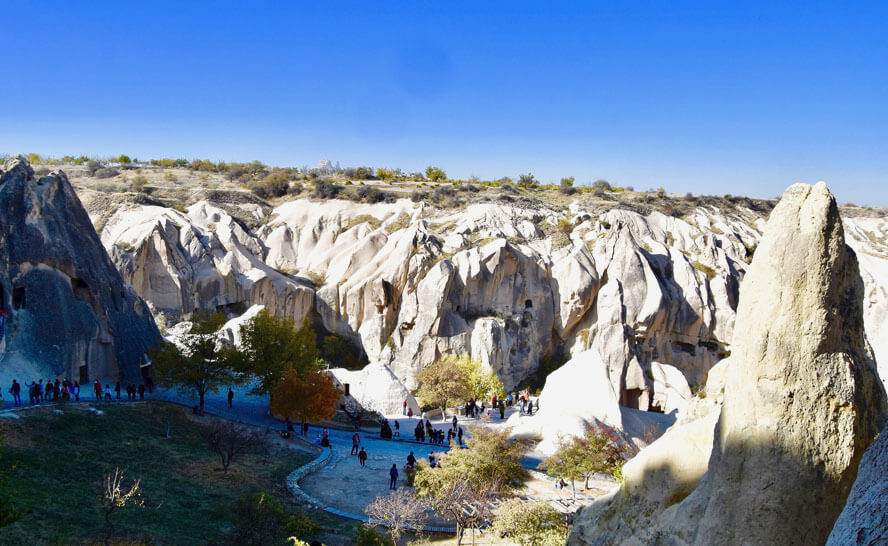
IV. Exploring Goreme Open Air Museum
Highlights of the open-air museum
Goreme Open Air Museum in Cappadocia, Turkey, is an enchanting site that offers a glimpse into the region's rich history and unique rock-cut architecture. Here are some highlights of the open-air museum:
-
Rock-cut Churches: The museum is home to several rock-cut churches, each adorned with stunning frescoes that depict biblical scenes. These churches were carved into the soft volcanic rock by early Christians who sought refuge in Cappadocia during the Byzantine period.
-
Elmali Church: One of the most significant churches in the museum, Elmali Church, also known as the Apple Church, features well-preserved frescoes dating back to the 11th and 12th centuries. The frescoes showcase vivid and intricate details, illustrating religious narratives and saints.
-
Dark Church: Another must-visit attraction in the museum, the Dark Church, also known as the Church of Saint John the Baptist, impresses with its extraordinary frescoes. These frescoes were beautifully preserved due to the church's dark and concealed location, protecting them from natural elements.
-
Tokali Church: Tokali Church, meaning "the Buckled Church," stands out for its magnificent frescoes and impressive architectural details. It is the largest church in the museum and provides a fascinating insight into this ancient site's religious and cultural significance.
Key attractions and their historical significance
-
Buckle Church: The Buckle Church, also known as the Karanlik Kilise, showcases some of the most exceptional frescoes in the museum. The frescoes inside the church depict scenes from the New Testament and are thought to date back to the 12th century.
-
Apple Church: The Elmali Church, or Apple Church, stands out for its unique architectural design and well-preserved frescoes. The frescoes inside the church depict various religious scenes, including the Crucifixion of Christ and the Last Supper. They are considered some of the finest examples of Byzantine religious art.
-
Snake Church: The Snake Church, or Yilanli Kilise, is named after the depiction of a large snake on the church's ceiling. The frescoes inside the church portray various biblical scenes, including the Nativity, the Ascension, and the Transfiguration.
-
Nunnery Complex: The Nunnery Complex, or Melagobia, is a group of rock-cut chambers that served as a religious community for nuns during the Byzantine period. The complex features several connected chambers, a communal kitchen, and a chapel with well-preserved frescoes.
Goreme Open Air Museum is a remarkable UNESCO World Heritage Site that offers an extraordinary glimpse into the region's past. It highlights Cappadocia's religious and cultural significance and stands as a testament to the creativity and craftsmanship of early Christian communities. To fully appreciate this unique site's historical and cultural significance, it is recommended to explore the museum with a knowledgeable guide.

V. Hot Air Ballooning over Goreme Valley
Overview of hot air ballooning in Cappadocia
One of Cappadocia's most thrilling and unforgettable experiences is hot air ballooning over Goreme Valley. This unique adventure allows you to soar above the fairy chimneys and experience the breathtaking beauty of the landscape from a whole new perspective.
Cappadocia is known for its surreal rock formations, often called fairy chimneys, formed millions of years ago from volcanic eruptions and erosion. These formations resemble tall, thin towers with mushroom-like caps, creating a whimsical and otherworldly landscape.
Hot air ballooning has become the iconic activity in Cappadocia, attracting thousands of tourists annually. The region's unique geological features and calm weather conditions make it the perfect destination for this exhilarating adventure.
Experience floating above the fairy chimneys
When you embark on a hot air balloon ride over Goreme Valley, you'll start your journey before dawn to catch the sunrise and witness the stunning colours of the sky illuminating the landscape. After a safety briefing, you'll board the balloon and slowly ascend, where panoramic views of the fairy chimneys, valleys, and vineyards below greet you.
As you float peacefully above the unique rock formations, you'll have an unparalleled opportunity to appreciate the intricate details of the landscape. Combining the golden morning light and the ethereal beauty of Cappadocia will create a truly magical and enchanting experience.
The hot air balloon ride typically lasts about an hour, during which you may reach heights of up to 1,000 feet. The experienced pilots will manoeuvre the balloon, allowing you to glide above the valleys and capture breathtaking photographs of the picturesque scenery.
Hot air ballooning is a popular and safe activity in Cappadocia, with licensed and experienced operators ensuring the highest safety standards. However, booking your balloon ride in advance is essential, as this activity is in high demand.
Goreme Valley and its fairy chimneys are truly a fairytale landscape that must be seen to be believed. The feeling of floating above this surreal and awe-inspiring scenery is an experience that will stay with you for a lifetime.
So, if you're planning a visit to Cappadocia, include a hot air balloon ride over Goreme Valley in your itinerary. It's an adventure that will take your breath away and leave you with memories to treasure forever.
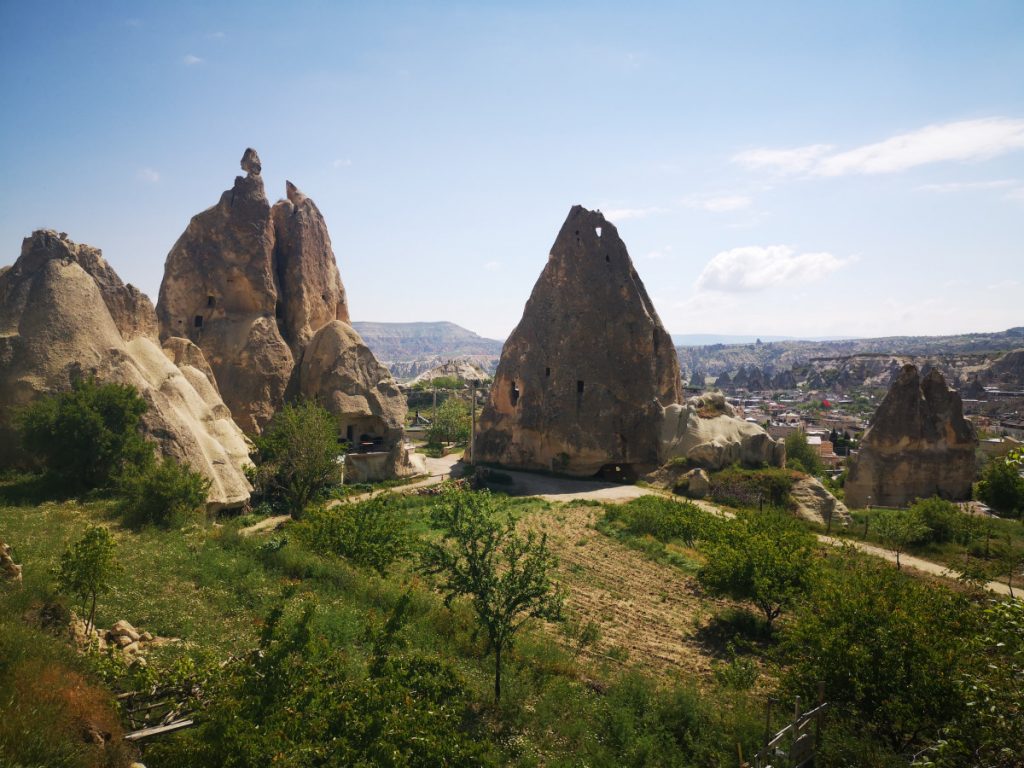
VI. Outdoor Activities in Goreme Valley
Hiking and trekking opportunities
Goreme Valley in Cappadocia offers a variety of outdoor activities for nature and adventure lovers. Hiking and trekking are popular activities that allow visitors to explore the breathtaking landscape and discover hidden gems. Some of the best hiking and trekking routes in Goreme Valley include:
1. Rose Valley: This scenic valley is known for its stunning rock formations and beautiful rose-coloured hues. Hikers can follow the trail that winds through the valley, passing by fairy chimneys and ancient cave dwellings.
2. Pigeon Valley: Named after the thousands of pigeon houses carved into the rocks, Pigeon Valley offers picturesque views and a peaceful atmosphere. Hikers can enjoy a stroll along the valley floor or take a more challenging hike up to Uchisar Castle for panoramic views of the region.
3. Love Valley: Love Valley is famous for its phallic-shaped rock formations, which are quite a sight. Hiking through Love Valley provides a unique and surreal experience, with stunning vistas and opportunities for beautiful photographs.
4. Ihlara Valley: Located a short drive from Goreme Valley, Ihlara Valley is a paradise for hikers. The valley is home to a picturesque river, ancient cave churches, and lush greenery. Hiking through the valley allows visitors to discover its natural beauty and historical sites.
Horseback riding and ATV tours
For a more adventurous way to explore Goreme Valley, consider horseback riding or joining an ATV tour. These activities offer a thrilling experience, allowing you to enjoy scenic views. Here are some options for horseback riding and ATV tours in Goreme Valley:
1. Horseback Riding: Ride through the fairytale-like landscape on horseback and explore Cappadocia's valleys and rock formations. Several tour operators offer horseback riding tours tailored to different skill levels.
2. ATV Tours: ATV tours provide an adrenaline-pumping way to discover the unique landscape of Goreme Valley. Ride through the valleys, visit ancient cave churches, and enjoy panoramic views from the hilltops. ATV tours are suitable for beginners and experienced riders alike.
Whether you choose to hike, trek, horseback ride, or take an ATV tour, outdoor activities in Goreme Valley offer an opportunity to immerse yourself in the fairytale-like surroundings of Cappadocia. Don't forget to pack your hiking boots or gear up for an adventurous ride to make the most of your visit to this enchanting destination.
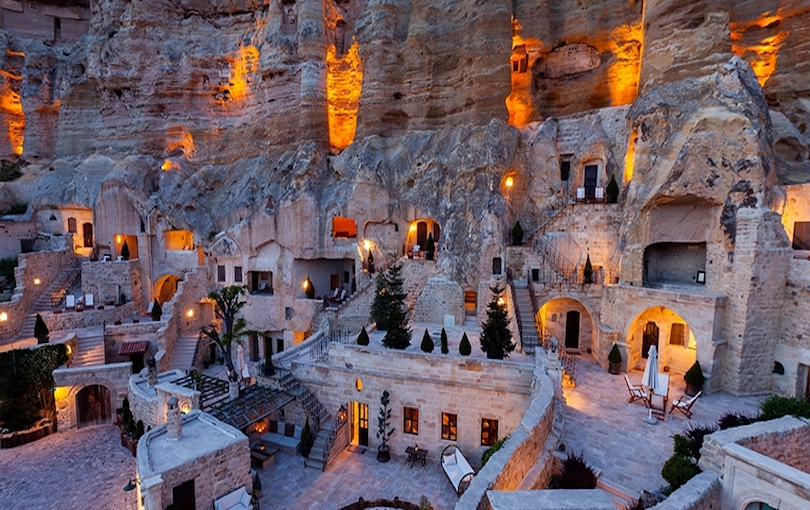
VII. Accommodation and Dining Options in Goreme Valley
Overview of hotels, guesthouses, and cave hotels
When visiting Goreme Valley in Cappadocia, various accommodation options suit every traveller's preference. Here is an overview of the types of accommodations available:
Hotels: Several hotels in Goreme Valley cater to different budgets and provide comfortable amenities for a pleasant stay. From luxury five-star hotels to budget-friendly options, you'll find accommodation options to suit your needs.
Guesthouses: For a more personal and cosy experience, consider staying in a guesthouse. These establishments offer a homely environment and often have friendly staff who can provide valuable insights into the local culture and attractions.
Cave Hotels: One of the unique aspects of Goreme Valley is the presence of cave hotels. These hotels are built within rock formations and offer a truly immersive experience. Staying in a cave hotel makes you feel connected to the region's history and adds a touch of authenticity to your trip.
Traditional Turkish cuisine and local restaurants
While exploring Goreme Valley, indulge in the delicious traditional Turkish cuisine. Numerous local restaurants offer many dishes that delight your taste buds. Here are some must-try Turkish dishes:
1. Kebabs: Turkish cuisine is famous for its flavorful and juicy kebabs. Whether you prefer lamb, chicken, or vegetarian options, you'll find a variety of delicious kebabs to satisfy your hunger.
2. Mezze: Mezze refers to a selection of small dishes served as appetizers. From savoury dips like hummus and tzatziki to stuffed grape leaves and grilled vegetables, the mezze spread offers a delightful array of flavours.
3. Baklava: A quintessential Turkish dessert, baklava is a sweet pastry made of layers of filo pastry filled with chopped nuts and soaked in sweet syrup. It's a heavenly treat that will satisfy your sweet tooth.
4. Pide: Pide is a Turkish-style pizza with a thin and fluffy crust topped with various ingredients such as cheese, meat, and vegetables. It's a popular dish perfect for sharing with friends or family.
5. Turkish Tea: End your meal with a cup of Turkish tea called çay. Served in a tulip-shaped glass, Turkish tea is a fragrant and refreshing beverage enjoyed throughout the day.
Many restaurants in Goreme Valley serve these traditional dishes, allowing you to experience the rich flavours of Turkish cuisine.
